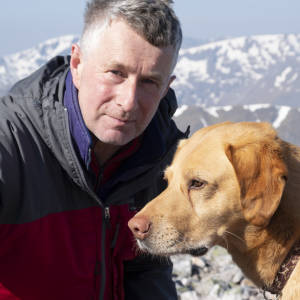The Inverness Peaks
The miserable day of rain here (29 December 2012) made me think back to a scorching day of an amazing family holiday in 2008. I only dug this up because I actually did a decent daily journal. I have reviewed some of the images but the words bring the day back to me as clearly as yesterday. Sorry now if it is just a boring holiday story but this part of British Columbia is beautiful.
i]Overnight at Regent Inn, Revelstoke
We have looked at a few options for today and first head up Mount Revelstoke (Meadows in the Sky Parkway). A 25km paved highway leads almost all the way to the summit. The summit meadows are famous for their seasonal display of meadow flowers; Lupins, Indian Paintbrush and Glacier Lillies. We are a little late for this but realise the hotel lobby pictures are actually large photo prints of this very area with the flowers in full bloom. At 1900m there is no difference in air temperature to that in the town. It is hot and visibility is very good. The air has that razor sharp BC quality and mountains can be seen for miles around; the most prominent in a 360 degree scan is the glacier clad sgurrs of Mount Begbie in the Monashees. The summit fauna is very delicate and while the bears are allowed to dig up and scrape the ground tourists are compelled to stay on the well surfaced narrow paths which wind around the wooded summit knolls. It is a breathtaking spot and an airy viewpoint which is achieved cheaply in terms of human exercise thanks to the long approach road which even makes the ascent easy for a car. The park ranger assures us that we are enjoying one of the best days of the year following an exceptionally wet summer. Snow still blocked the access road as recently as August. Our short forenoon visit hardly does the summit justice but we have more boxes to tick.
After lunch we visited Revelstoke Dam. This dam on the Columbia River, one of a series, is an enormous concrete structure 175m high. Head (height) and volume of water are fundamental to hydro electric generation. In Scotland schemes rely on a dam high up in the mountains for head with pressurised tunnel or pipeline often miles long to a remote turbine house to achieve the necessary head. At Revelstoke the dam itself is so high that the reservoir level of the retained water is sufficient for the head so the turbine housings are positioned at the base of the dam. It is one massive integrated structure. BC Hydro the operators have a big reception hall and visitor centre over two floors. There are educational interactive displays and models. The visitor can walk through a chilly tunnel within the heart of the structure to a lift where you are transported in a few seconds to another mini visitor centre at the top of the dam. This offers views up the reservoir and down to the power house building and the onward flowing Columbia River. Everything is big here. This river drains a vast area of the Canadian Rockies and is the fourth largest river in the North American continent. Four enormous turbines generating 500 megawatts each currently operate but the dam was built with capacity for another two. At the time of our visit engineering work had commenced on the installation of number 5. Put into context the entire Alcan Scheme at Lochaber can generate 84 megawatts. It was more interesting than the boys had expected. Praise indeed.
We weren't finished yet. The Revelstoke Railway Museum was next. The story and significance of the CP line is rightfully a big part of local history. Among other smaller exhibits the building actually houses a 1941 executive carriage and an enormous steam locomotive. We were able to talk briefly with one of the engines original drivers (engineer). He was retired and possibly bored of answering silly questions but he tolerated us and imparted some fascinating aspects of controlling a mile long train and in particular about this engine. While there seemed to be dozens of dials, valves and levers he maintained that there are only four controls required to work this machine which I estimated to weigh at least 120 tons. The most notable misconception I had was that all engines of this appearance burned coal. Wrong, this machine was designed and built -in Montreal- from the outset to burn oil and spent its life on the line between Revelstoke and Kamloops. "There was no coal here so it burned oil."
Other areas of the museum displayed impressive scale models of massive timber trestle type bridges which existed in the 1890 era for about a decade. Glass cabinets housed old surveying instruments but I thought some explanatory notes were possibly short on detail. If it was there I didn't see it; there was no mention of the Spiral Tunnel

Comments
Sign in or get an account to comment.


